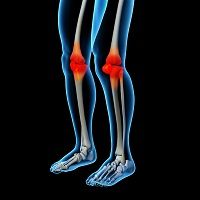Article
Bath Time for Patients with Knee Osteoarthritis?
Author(s):
For patients with knee osteoarthritis (OA), balneotherapy (mineral baths) combined with physical therapy may be more effective than physical therapy alone.

For patients with knee osteoarthritis (OA), balneotherapy (mineral baths) combined with physical therapy may be more effective than physical therapy alone.
Standard knee OA treatment can involve patient education, pharmacologic therapy, physical therapy, and surgery. In many countries and in the EULAR guidelines for treatment of knee OA, balneotherapy is also a recommended technique; but to this point clinical evidence of its effectiveness has been limited to a few, potentially flawed studies. It remains a popular technique with clinicians and patients alike, but it is still unproven.
A new Turkish study, published in Archives of Rheumatology, doesn’t complete the evidence picture, but it does add to the case that bathing in thermal and mineral waters can improve the range of joint muscles, relieve muscle spasms, and maintain or improve functional mobility for knee OA patients.
In the study, 46 patients (10 males, 36 females; mean age 70.82±7.78 years; range 57 to 85 years) with knee OA were given either physical therapy alone (hot pack, transcutaneous electrical nerve stimulation, and ultrasonography for the knee region, 45 minutes per day, five days a week for three weeks), or the same physical therapy protocol combined with daily 20-minute balneotherapy sessions five times per week for three weeks. Sickness impact profile was used for the evaluation of disease severity, along with visual analog scale, Western Ontario and McMaster Universities Arthritis Index, 10-meter walking test, and the use of analgesic drugs. Tests were performed both at baseline before treatment and at the end of the third week after treatment.
In both groups, significant improvements were observed for all of the measured variables (all p values <0.01). The group receiving the combination therapy had significantly superior improvements in all of the parameters compared to the patients who received physical therapy only. Importantly, socio-economic factors were similar across both groups, and both groups were under similar social and environmental conditions. Earlier studies had been discounted partly due to the possibility that patients in the two groups had different levels of activity during and after treatment.
According to the study authors, the effectiveness of balneotherapy can be explained by the thermal, mechanical, and chemical effects, which increase blood flow and vasodilatation, resulting in fresh blood supply and the removal of nociceptive elements and free oxygen radicals.
“In addition,” the authors noted, “hot bath causes elevation of betaendorphin and stress hormone levels, exerting a direct analgesic effect. Heat induces sedation and muscle relaxation and increases mobility.”
As in other studies on the effectiveness of balneotherapy, the authors noted the potential for pain relief as well.
One limitation of the study is that only patients with advanced knee OA were willing to do an inpatient physical therapy program. Thus, the authors noted, the results cannot be generalized to all knee OA patients. The researchers also stressed the need for further study with larger patient groups and longer follow-up periods.





